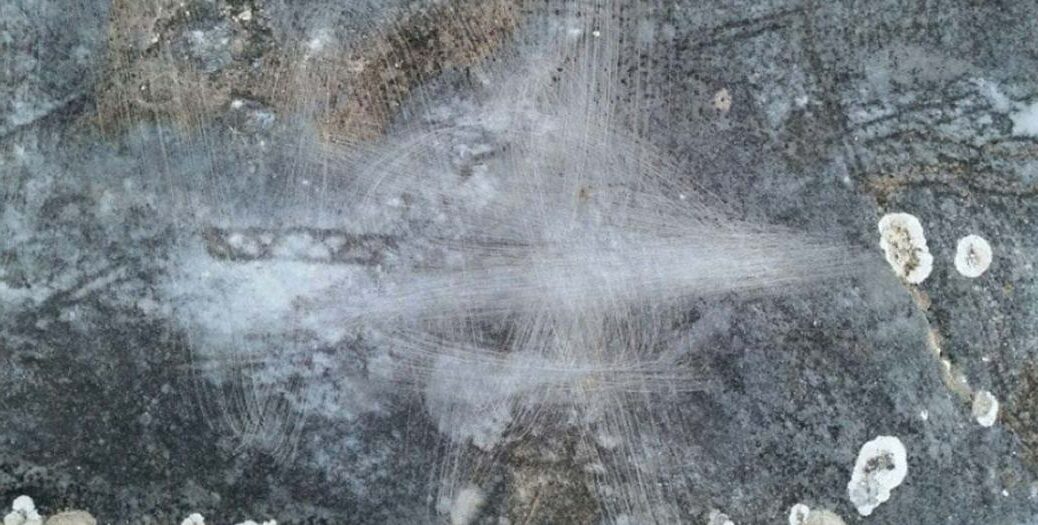Vandals destroy 3,000-year-old rock carvings in Northern Greece
Three outrageous acts of vandalism in the first week of January the stupid vandals are accused of lacking education knowledge of history on ancient monuments in Greece England and Wales.
The Athens-Macedonia News Agency (ANA-MPA) notes on Greece’s High Definition, telling how archaeologists and historians in Greece are assessing the level of destruction caused on several 3,000-year-old rock carvings on the Pangaion Hills near Kavala in northern Greece.
In 1966 the ancient art was discovered by Nikolaos Moutsopoulos, a professor at Aristotle University, the ancient art was not yet listed for preservation, and therefore they were vulnerable, if not to vandalism, to the elements, but unfortunately the former got there first.

Some of the ancient rock carvings are thought to have been executed in the prehistoric era by the Hedones, a Thracian tribe that lived in the region in ancient times, and the site was added to until the Middle Ages.
The gang of yet unknown vandals defaced several carvings, including human figures doing day-to-day things, animals and plants, using a wire brush. While the archaeologists have not specified how many individual carvings were destroyed, or how many remain intact, they are calling for the immediate protection of the surviving works of ancient art.
Theodoros Lymberakis, a local lawyer and historian, told the ANA-MPA that the rock carvings are a part of “our rich and significant cultural heritage” and inform us about how people lived 3,000 years ago. Angered, the historian added: “culture is not just the Acropolis and other famous monuments, it is also these drawings,” and he insists they need to be safeguarded now.

Attempting to draw a criminal profile of the criminals, Mr. Lymberakismay thinks the artworks might have been destroyed by gold prospectors trying to confuse their competition, as many people believe ancient settlers made the carvings to identify gold deposits on what he calls ore-rich hills.
According to the lawyer, it is sad that these petroglyphs are being destroyed by “unscrupulous and ignorant people at the altar of what is usually non-existent treasure” and that the perpetrators lack “education, knowledge, and understanding of history.”
Also, this week another person or group suffering from lowered levels of education, knowledge, and understanding of history painted “aliens” on the ancient stones at Mulfra Quoit, a megalithic tomb, near the town of Penzance in southwest England.
A Coast to Coast article says that the Cornish Ancient Sites Protection Network posted a photo of the vandalism on their Facebook group writing “one wonders at the mentality of people who will disrespect an ancient site in this way!”

It is believed that the stereotypically alien figures painted on the rock at Mulfra Quoit were inspired by the fringe theory that the ancient structures were built by extraterrestrials, or by humans honoring visiting aliens in prehistory.
Because indigenous people couldn’t have done it themselves? Right? And while the gray painted “aliens” can be removed with little effort, because it is a protected location cleaning work will have to be done by government-approved professionals, which takes time and costs money.
The Greek treasure hunters and the ancient alienists in England come in second and third this week, for the trophy of ‘Biggest Prat 2020, So far…’ must go to the vandals reported by the BBC after they caused “appalling damage” to a Bronze Age burial mound dating back 3,000-4,000 years, sometime between Christmas Day and 6 January.
Wentwood represents the largest section of ancient woodland in Wales and several Bronze Age burial mounds encrust its ridges, and the Gwent Police Rural Crime Team said the destruction was caused by off-road vehicles repeatedly driving over the ancient mound.

Site manager Rob Davies said this type of vandalism has been “an ongoing problem with damage to this and similar features within Wentwood” and the police tweeted: “investigating appalling damage caused to a Bronze Age burial mound by off-road vehicles. Immediate intervention measures being introduced to prevent further damage.”
